The park of Sanssouci Palace has many surprises in store. Not only beautifully designed parks and extensive paths along shady trees, but also buildings such as the Roman Baths or Charlottenhof Palace.
The Roman Baths are located in the southern park area of the palace, not far from Charlottenhof Palace.
Frederick William IV was quite talented artistically and loved to sketch buildings or parks that would then be realised by architects. During his time as Crown Prince, he designed Charlottenhof Palace and the Roman Baths, for example.
Charlottenhof Palace
In 1825, Crown Prince Frederick William IV received a baroque manor house on the edge of the palace grounds as a Christmas gift from his father.
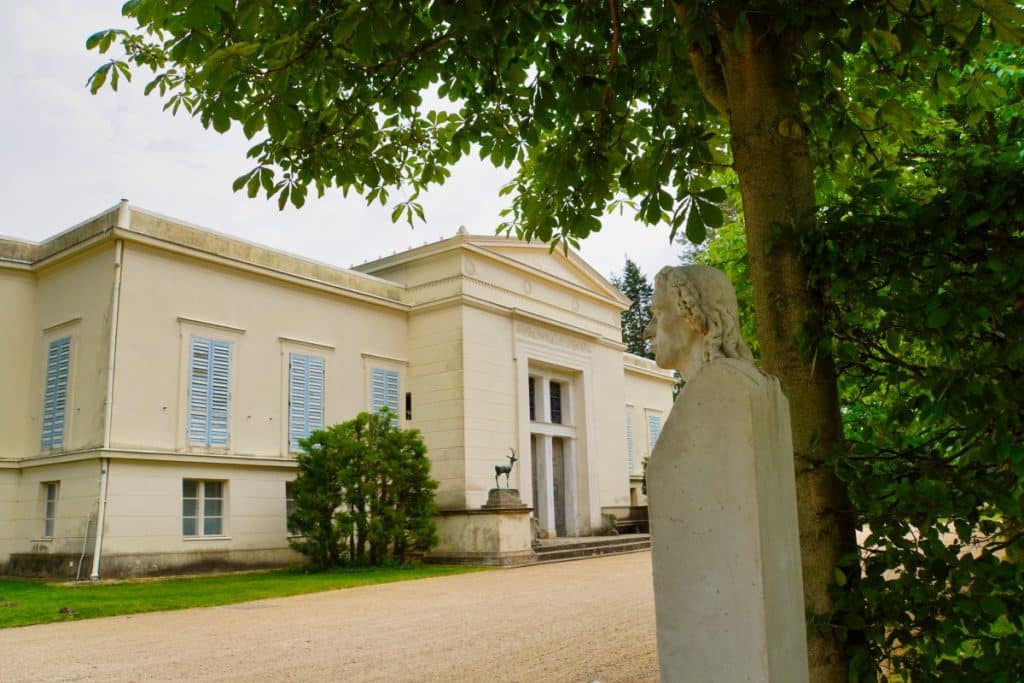
During his time as crown prince, the later Frederick William IV had Charlottenhof Palace (1826-1829) rebuilt in the classicist style. He commissioned Karl Friedrich Schinkel to do this and Peter Joseph Lenné to design the gardens. The result was a small pleasure palace modelled on Roman villas.
The small castle has 10 rooms whose furnishings have been almost completely preserved. Many of the furnishings were also designed by Schinkel. I read that one of the rooms is supposed to be designed like a Roman military tent, with blue and white striped paper wallpaper on the walls and ceiling. Alexander von Humboldt lived in this room for a while.
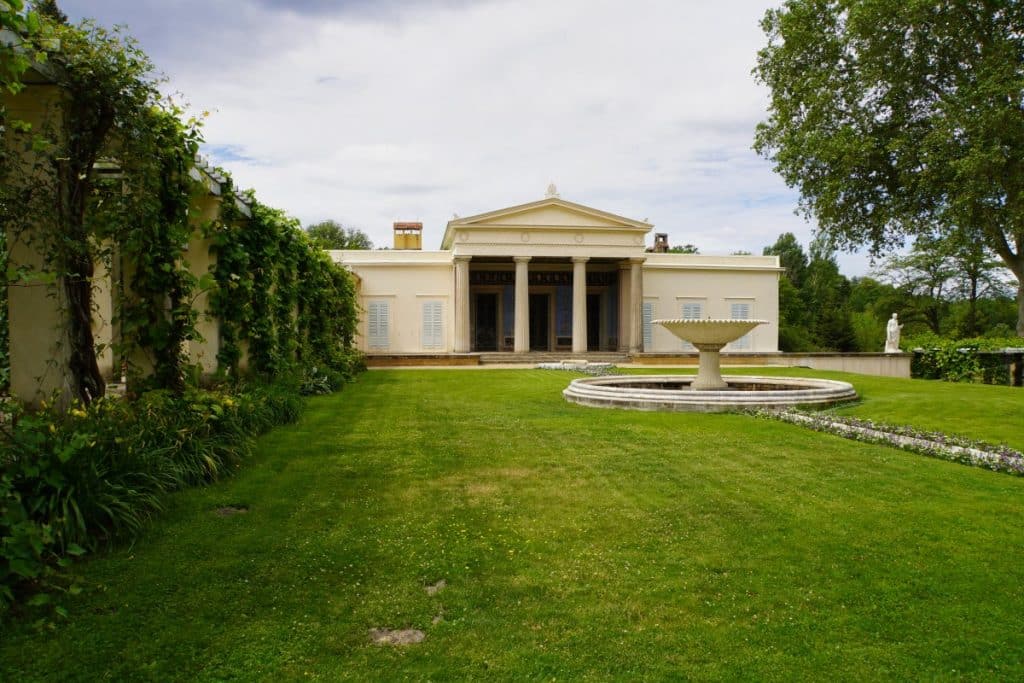
Around the palace is a geometrically laid out park. This type of design was described as “Italian” and so it is not surprising that the Crown Prince, as a self-confessed fan of Italy, helped to shape the design.
I really like Charlottenhof Palace. When you look across the lawn with the splashing fountain to the building, walk under the canopied walkways and take a seat on one of the benches, it’s almost like being on holiday.
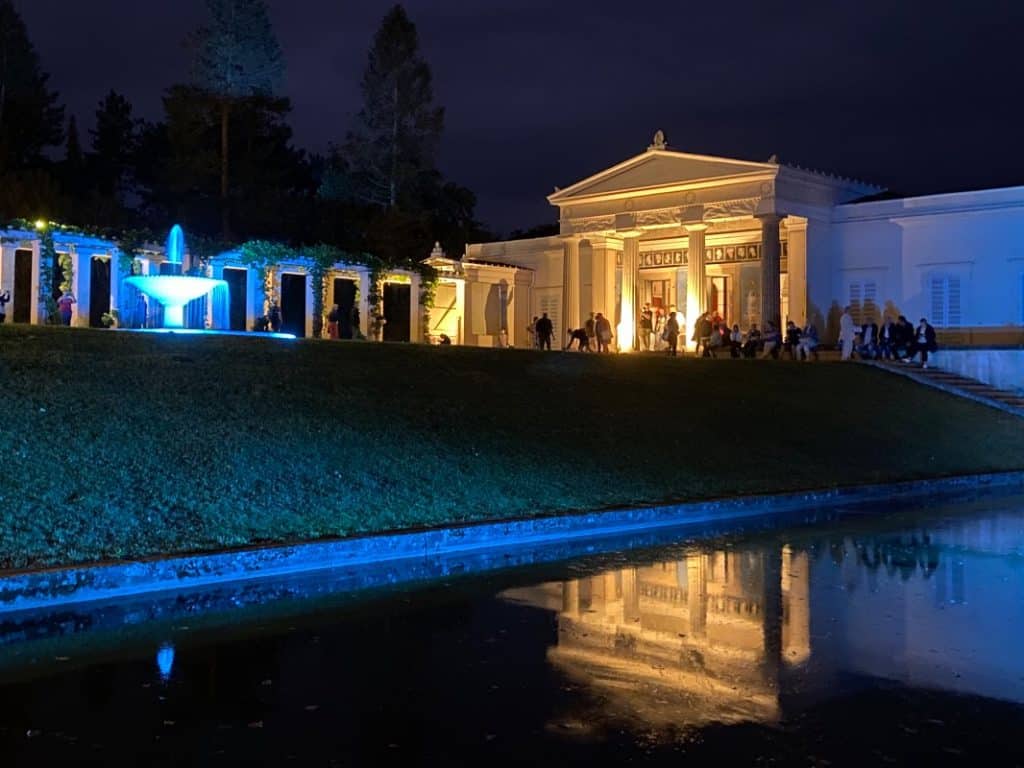
Roman baths
Visually, the Roman Baths form a contrast to the rather straight and austere Charlottenhof Palace. They seem almost like an Italian country estate and show very clearly how much Frederick William IV liked this country.
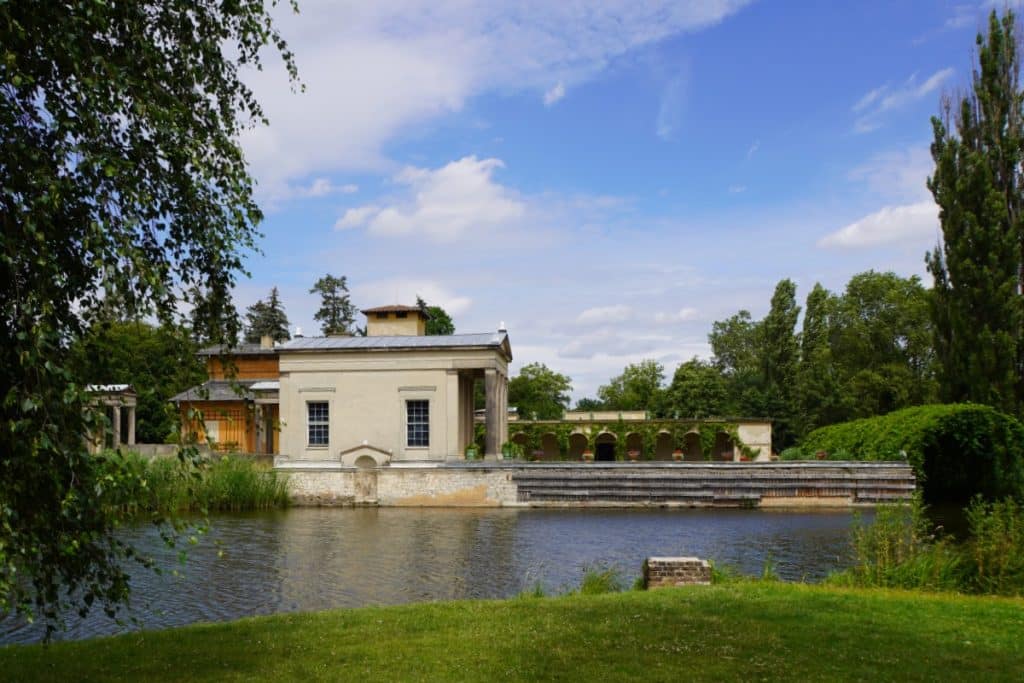
In his sketches, which the then crown prince passed on to the architect Karl Friedrich Schinkel, he depicted various Roman/old Italian styles. Schinkel tried to implement these as far as possible. The result was a building complex from the romantic fantasies of an Italy lover.
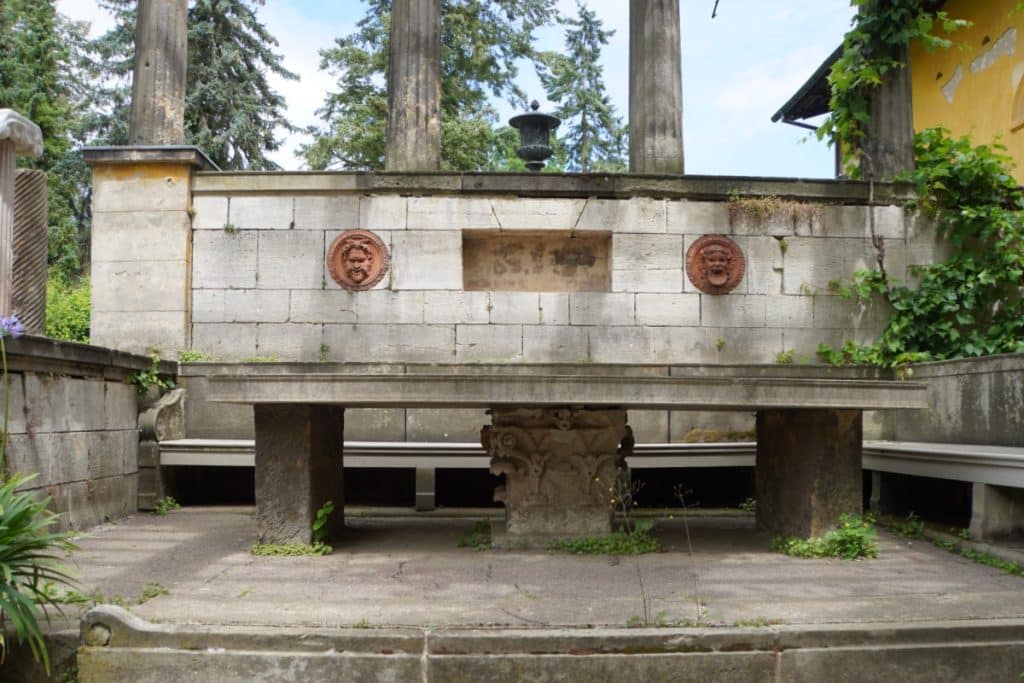
First, the gardener’s house and the gardener’s assistant’s house were built between 1829 and 1832, both also in the style of an Italian country house. Around 1830, Schinkel then built a tea pavilion in the style of an ancient temple, and from 1834 the Roman Baths were built.
The gardener’s house is a two-storey building with a flat gable roof and an attached pent roof as well as a laterally offset tower. The assistant’s house is a two-storey building with an enclosed courtyard and gable roofs of varying heights. In the garden courtyard there was an arcaded hall that was originally used as an orangery. Vine-covered pergolas connect the individual parts of the building and from a terrace there is a fantastic view over the small lake.
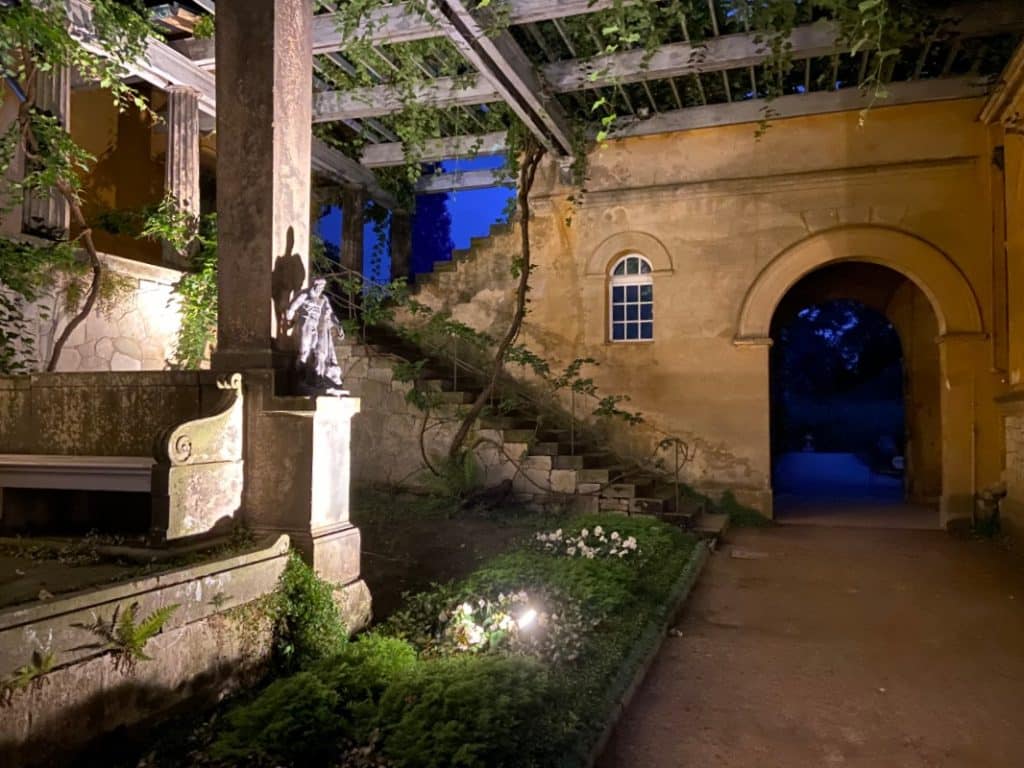
The Roman Baths proper, is a bit of a cross between an ancient villa and a Roman spa. The reception room is called the atrium and resembles the courtyard of a Roman house. Behind the atrium is a room called the impluvium. An impluvium is actually a collection basin for rainwater and is located in the atrium. There is a small garden courtyard Viridarium (actually the name for a green or cold house), Apodyterium (lining house) and a Caldarium (warm bath). There is also a billiard room, which is the only room in the Roman Baths that served a specific purpose.
The Roman Baths ensemble is located directly on a small lake, the Machine Pond. This was artificially created by Lenné during the park design. Originally, there was a steam engine house there with a pumping station that provided the energy for the circulation of the water in the area around Charlottenhof, for example.
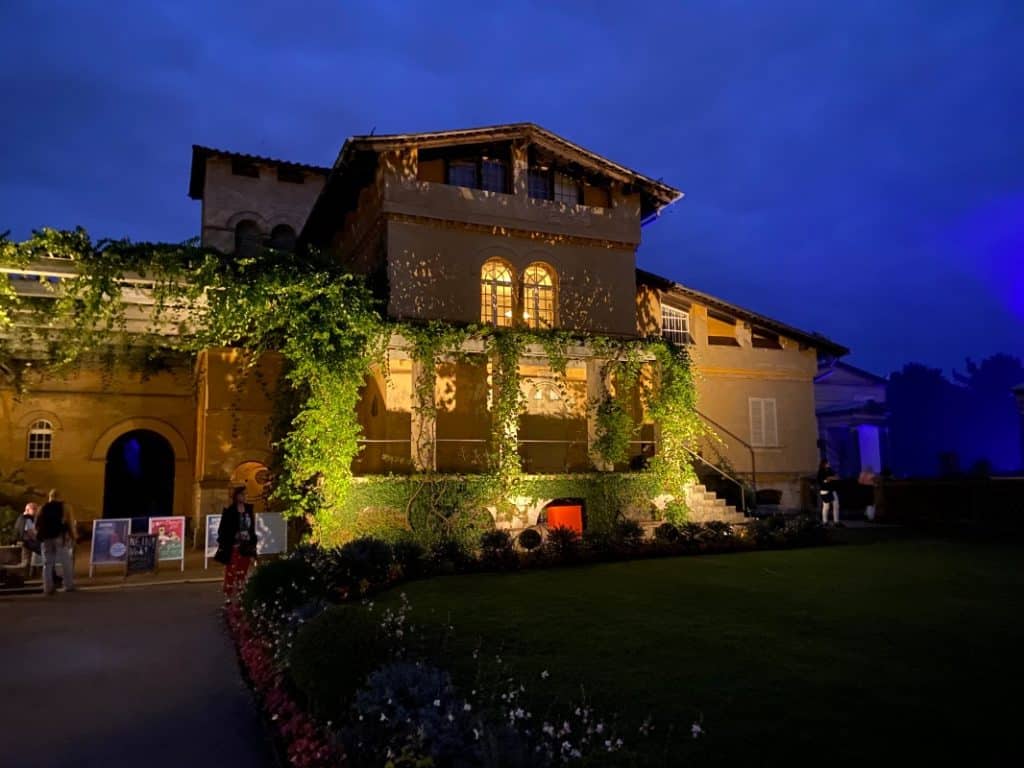
What I didn’t know until now: no one ever bathed in the Roman Baths! It’s almost a pity, actually, because the pictures from inside the building show a place where you could certainly have had a good rest.
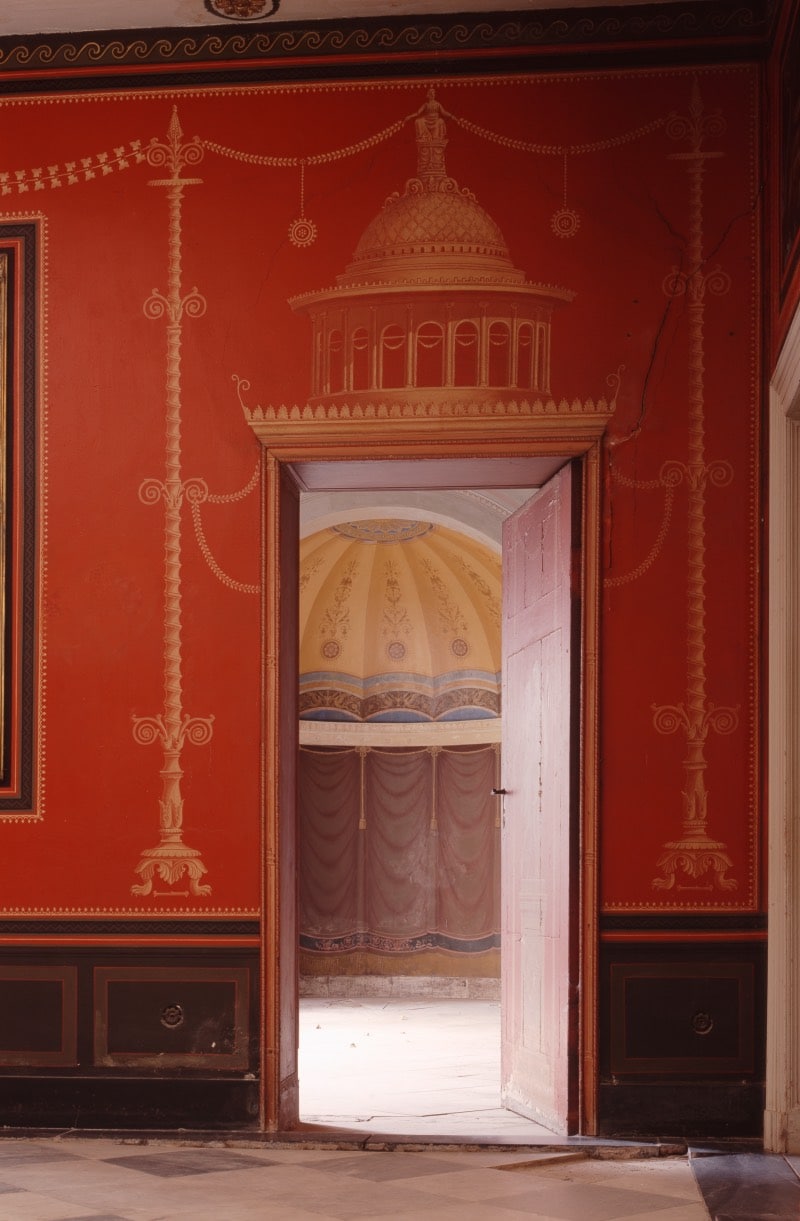
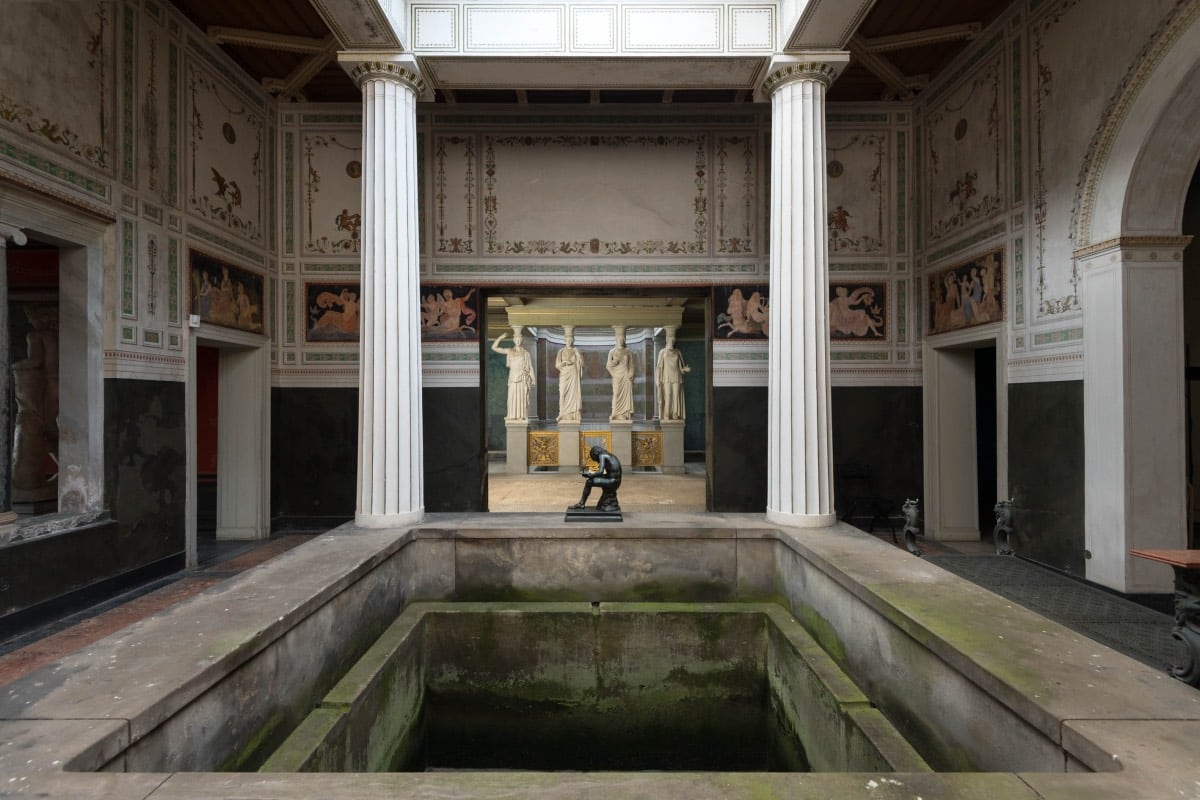
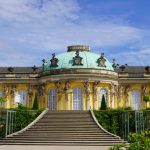
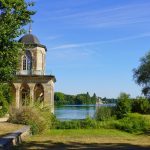
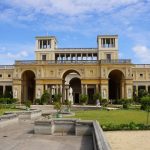
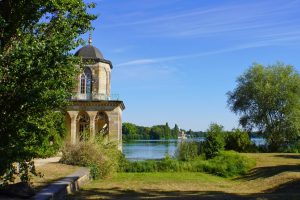
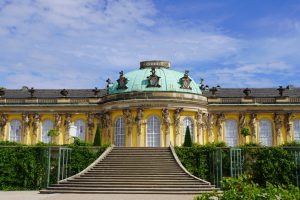
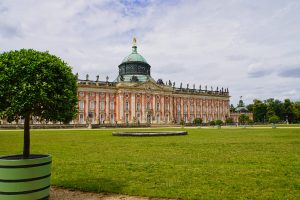
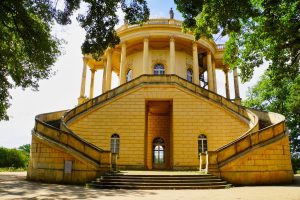

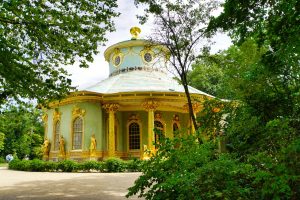
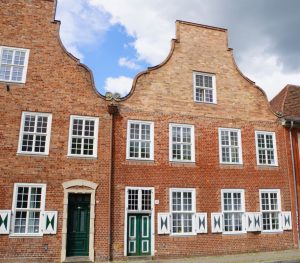
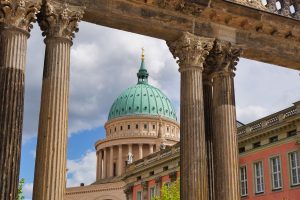
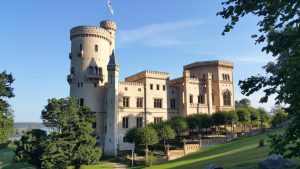
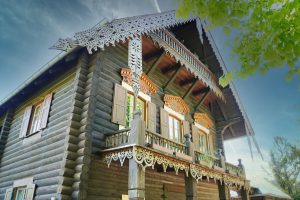

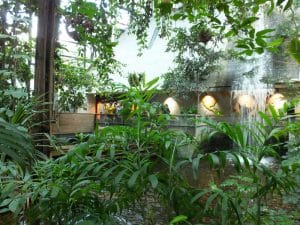
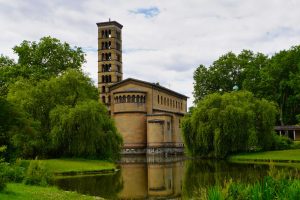
Leave a Reply